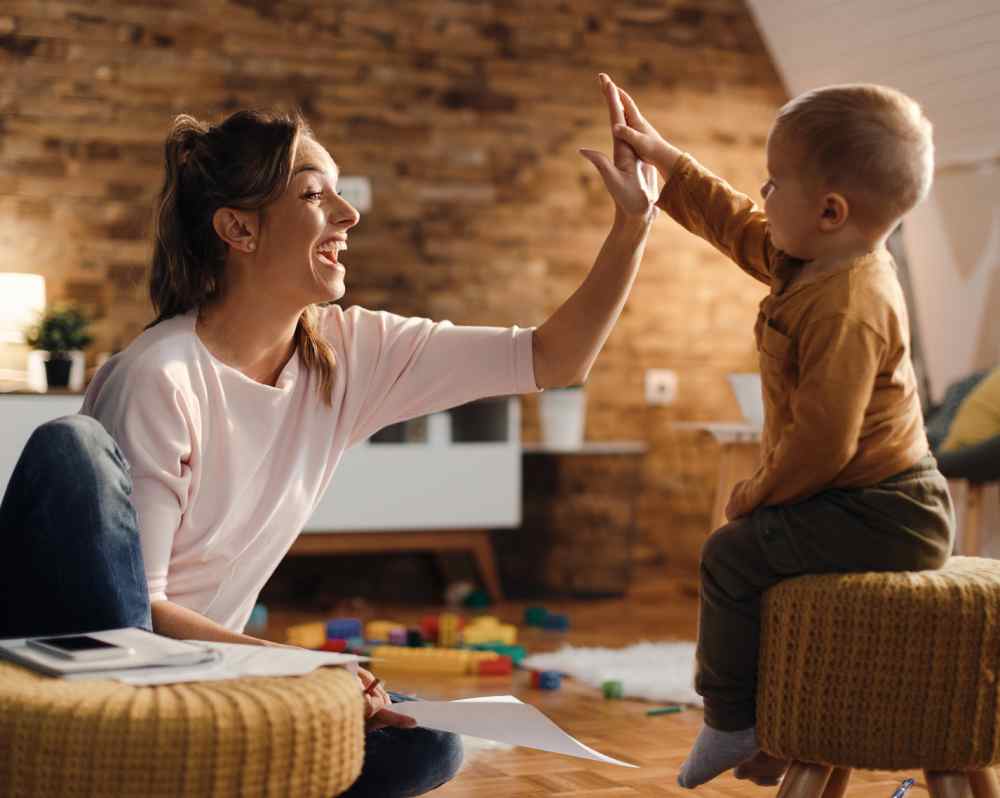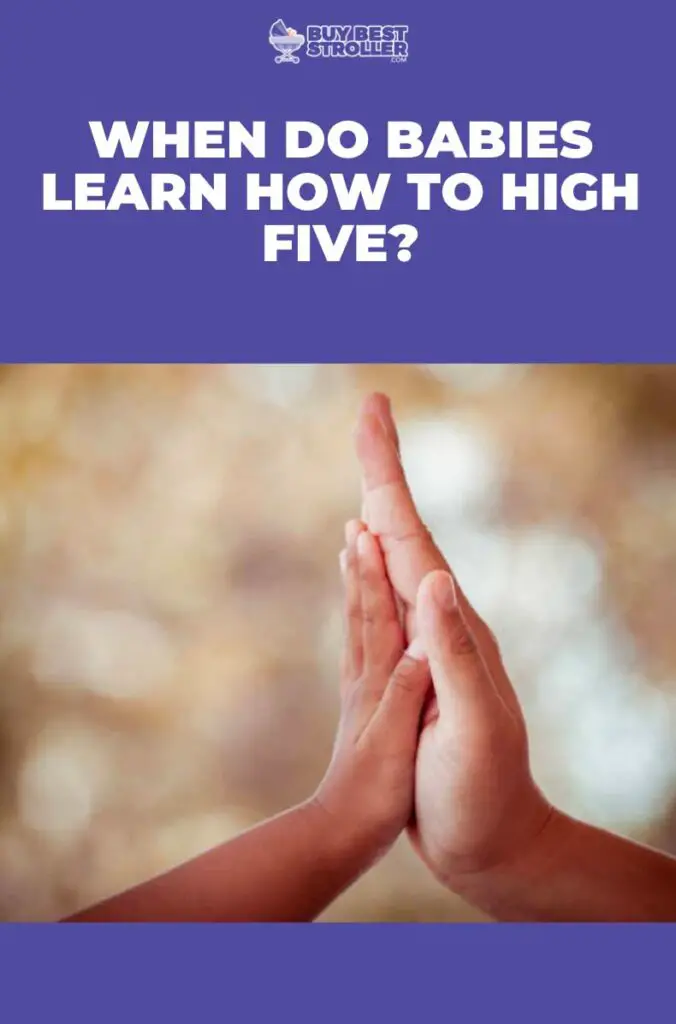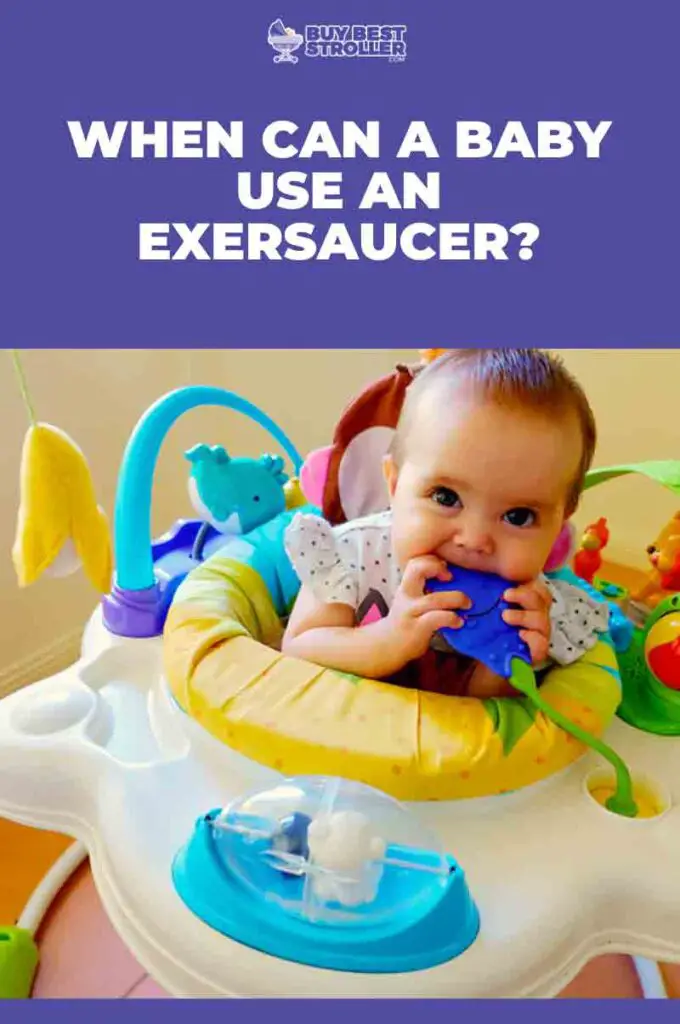Babies are amazing little creatures that seem to learn and develop at an astonishing rate. It’s always so fascinating to see what new skill they’ve mastered next. One question a lot of parents may have is when do babies learn how to high five? Don’t worry, we’ll cover it.
In this post, we’ll talk about when do babies learn how to high five and how can you teach them to wave hello.
When Do Babies Learn How To High Five?
Babies learn how to high-five when they are around 8 months old. However, this is only an average age, your baby may learn before or after 8 months of age as well, which is perfectly normal.
In the beginning, your baby may just be imitating the action they see performed, especially if every time they clap they get a big reaction.
They learn by watching you do it and then copying your movements. So once they see you give someone a high five, they’ll want to try it too.
It may take them a few tries to get the hang of it, but eventually, they’ll be able to give a high five just like mom or dad.
In most cases, babies could successfully high-five after a few tries. When your baby reaches a new milestone, be sure to give them a high five.
High fives are a fun way to celebrate with someone, and babies love to mimic the things that adults do.
Around the age of one year, babies start to understand that clapping or high five is communication and a way to show emotion.

How Do I Teach My Baby To High Five?
The best way to teach a baby to high-five may vary depending on the baby’s age and personality, but here are a few tips to get you started:
- Start with your baby in a standing position.
- Just hold your hand out and wait for your baby to raise their hand and slap it.
- You can also say “high five” while you do it to get them more excited.
- Continue doing this until your baby catches on and can mimic the motion and sound on his or her own.
In addition, you can teach with a simple game of patty-cake or clapping your hands together in front of your baby’s face. As well as getting used to the clapping sound, will prepare them to raise their hand in the air.
As they get older, you can start teaching them how to do a low five and even a double high five.
What Should A 12-18 Month Old Be Doing?
12-18 months old should be doing a variety of things, depending on their stage of development. During the 12-18 month period, babies are learning to walk, talk, and feed themselves. They are also starting to learn more about the world around them.
So you can expect your baby to be doing things like walking, trying to say words, and picking up small objects.
Each baby progresses at his or her own pace, so some may be able to do more advanced things than others.
As long as your baby is progressing in some way each month, he or she is likely doing just fine.

At this age, your baby should also be able to communicate with words better and follow simple directions. You should continue to feed your baby a variety of healthy foods and teach them how to brush their teeth and use the toilet independently.
Also, it’s crucial that you begin helping them develop good sleeping habits so they get the rest they need for healthy development.
How Do I Teach My Baby To Wave Hello?
There are a few different ways to teach your baby to wave hello. One way is to mimic the same motion that your baby does when they wave. You can model this behavior for them. When you see someone, say hi and wave at them. Your baby will see this and likely mimic what you’re doing.
The second way is to encourage them by saying “wave bye-bye” and then clapping your hands together when they do it.
You can also show them how to do it by waving at them yourself and then praising them when they copy you.
The third way to teach your baby how to wave is through games. You can play simple games like “follow the leader” or “Simon Says”. However, you will need someone else to help you out with these games. One person waves at the baby while the other person watches the baby’s response.
If the baby waves back, they get a point. Whichever way you choose, be sure to keep it fun and positive.
Generally, babies begin mimicking wave motion around the age of nine months, but some show early signs around 7 or 8 months. Some babies may take a little longer than others to learn how to wave hello, but with practice and patience, they will soon get the hang of it.

When Can You Tell If A Baby Is Gifted?
Several experts believe that you can tell if a baby is gifted as early as 6 months old. This is because some babies are able to display advanced skills in areas like speech, movement, and problem-solving at a very young age.
Many parents wonder if their child is gifted when they observe advanced abilities, for example, early reading, good memory, or a good relationship with adults.
There are a few characteristics that may indicate that a baby is gifted. Some gifted babies may be precocious learners and be able to read and speak at a young age. Moreover, they may have a broad vocabulary and be able to think deeply about complex topics.
Often, gifted babies are very active, energetic, and curious about the world around them.
If you suspect your baby is gifted, it’s important to talk to your pediatrician about your concerns. The doctor can help you determine if your child needs any additional testing or services to support their development.
Final Words
It’s never too early or late for babies to start learning about hand gestures like high-fives. The best time to teach your baby how to high-five is when they are about 8 months old.
So, if you want a toddler who is capable of giving a two-handed greeting, now is the best time to teach him/her.
Keep these tips (mentioned above) in mind before teaching your little one this important life skill. It is important that you teach your baby these skills with patience and positive reinforcement.




